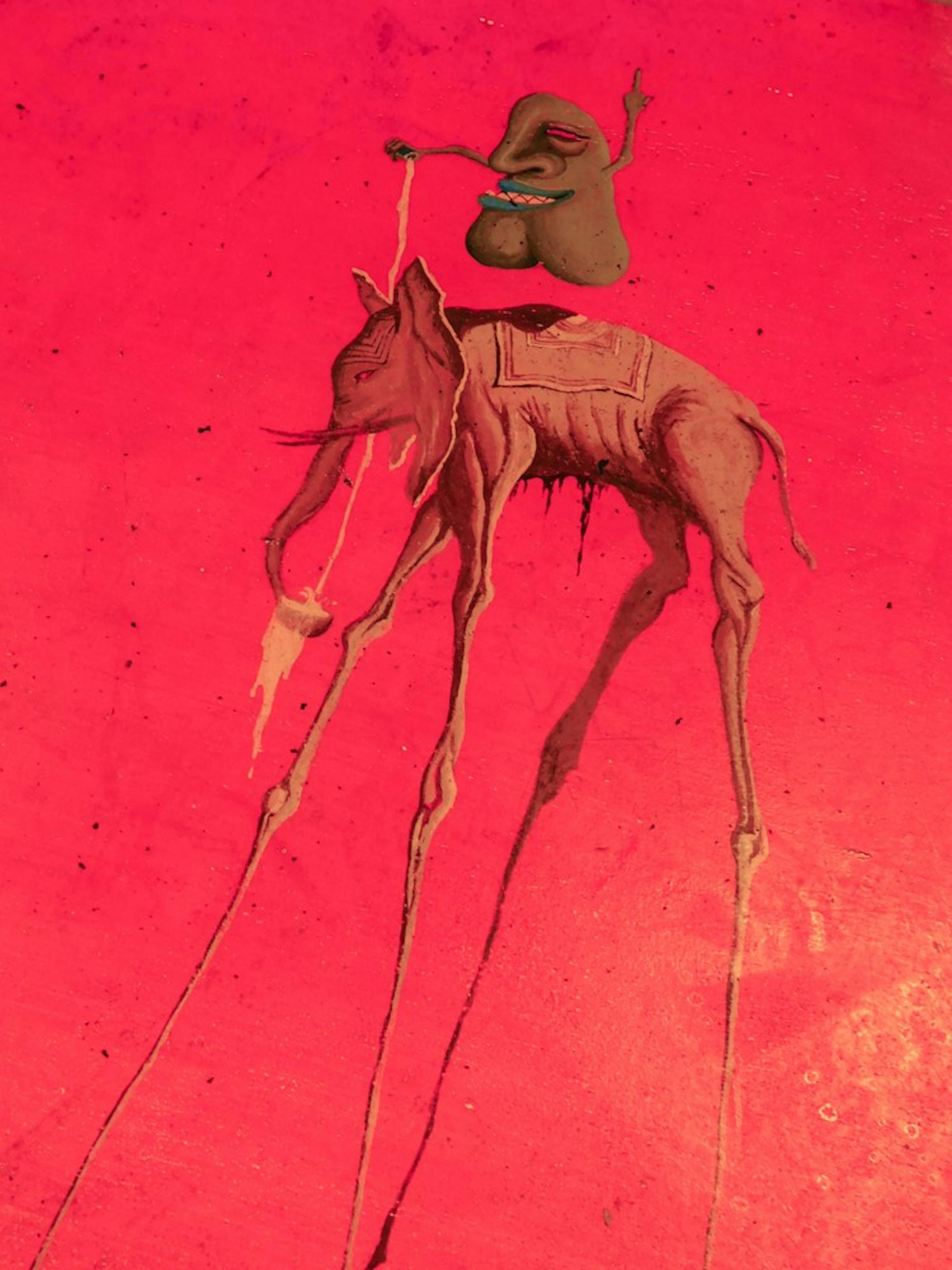Step into the basement of a fraternity or sorority, and more often than not, you’ll find pong tables. Dartmouth beer pong is a game which uses handle-less paddles and plant-inspired cup formations, distinguishing it from the “Beirut” of other college campuses. If you take a close look at the tables themselves, you’ll see that each one is outfitted with a custom paint job reflecting the culture of its house. The Dartmouth spoke to members of different Greek houses to learn more about this artistic tradition.
Ted Poatsy ’17, president of Kappa Kappa Kappa fraternity, elaborated on how members begin the process of designing a table.
“A lot of our designs are just things that people see or are inspired by and think would make a good piece of art,” Poatsy said.
For example, one of the pong tables at Tri-Kap is inspired by Nike’s “Jumpman” logo, which the company uses for its Air Jordan shoes. Modifying the logo to match its environment, the fraternity replaced the basketball in Michael Jordan’s hand with a pong paddle, and the table’s design includes a pillar and a shield, two symbols important to Tri-Kap’s history.
Poatsy also discussed how often new tables are made. While Tri-Kap’s members usually paint at least one new table a year, in this year alone they have already made six. Tables break with a degree of regularity, especially if they were not secured properly during the construction process. In fact, one Tri-Kap table was recently broken on its very first night of use.
Whenever Tri-Kap paints a new table, they use new wood instead of painting over an old design.
“Usually when we get rid of a table, it’s because it has become warped and the wood is no longer good,” Poatsy said. “Keeping [the surface of a table] flat is so important. It’s really important that you get a nice, clean coat [of paint] on each one.”
At Tri-Kap, while some tables are simply painted by its collective body of members, others are painted by certain class years. This is true for many of the other Greek houses as well.
Lizzy Jones ’17, a member of Sigma Delta sorority, discussed how one table in particular, inspired by Frida Kahlo, was painted by members of all class years. Most others, however, are painted by a certain year.
“The sophomores [paint a new table] every year,” Jones said.
Sophomore summer is an ideal time to paint a table because it is the first time since rush that, barring special exceptions, every student from a certain year is required to be on campus. During that time, members of Greek houses can bond with others in their class and in their house, and fond memories are often associated with the sophomore summer pong tables.
Sara Winfrey ’17, a member of Chi Delta sorority, highlighted how during her sophomore summer, she and other members of Chi-Delt decided to paint a Monopoly-themed pong table. She said that it was a way to commemorate the memorable events of sophomore summer.
Pointing to each square of the Monopoly board, she explained its significance. One of the more unique squares was a tribute to her sorority’s experience at a blueberry farm.
“One [Chi-Delt member in the Class of 2017] lives on a blueberry farm in New Hampshire, so one day we all drove there,” Winfrey said. “We picked blueberries, and her family made us dinner, and it was so lovely.”
That table was actually Chi-Delt’s first, as it was painted during the first summer since the sorority ended its national affiliation with Delta Delta Delta sorority.
For several fraternities and sororities, pong tables capture the history of the house in an artistic way. Eamon Murphy ’17, president of Bones Gate fraternity, indicated how various tables, both those currently in use and those preserved on the basement walls, were linked through small bits of BG’s culture.
“The ladle is a recurring motif throughout all of [the tables at BG],” Murphy said.
Another example of thematic continuity in BG’s pong tables is the emulation of certain artists’ works. Works by Salvador Dalí, Albrecht Dürer and M.C. Escher have all been inspirations for tables at BG. Murphy’s older brother, who was BG’s president several years ago, even used a projector to accurately trace a scene from Maurice Sendak’s book “Where the Wild Things Are.”
Each Greek house at Dartmouth has a certain atmosphere associated with it, and as demonstrated by the interviewees, members work very hard to capture that atmosphere in the artwork of their pong tables. Whether painted by a single member, a specific class or by the entire house, the art of pong tables both reflects and becomes part of each house’s culture.




